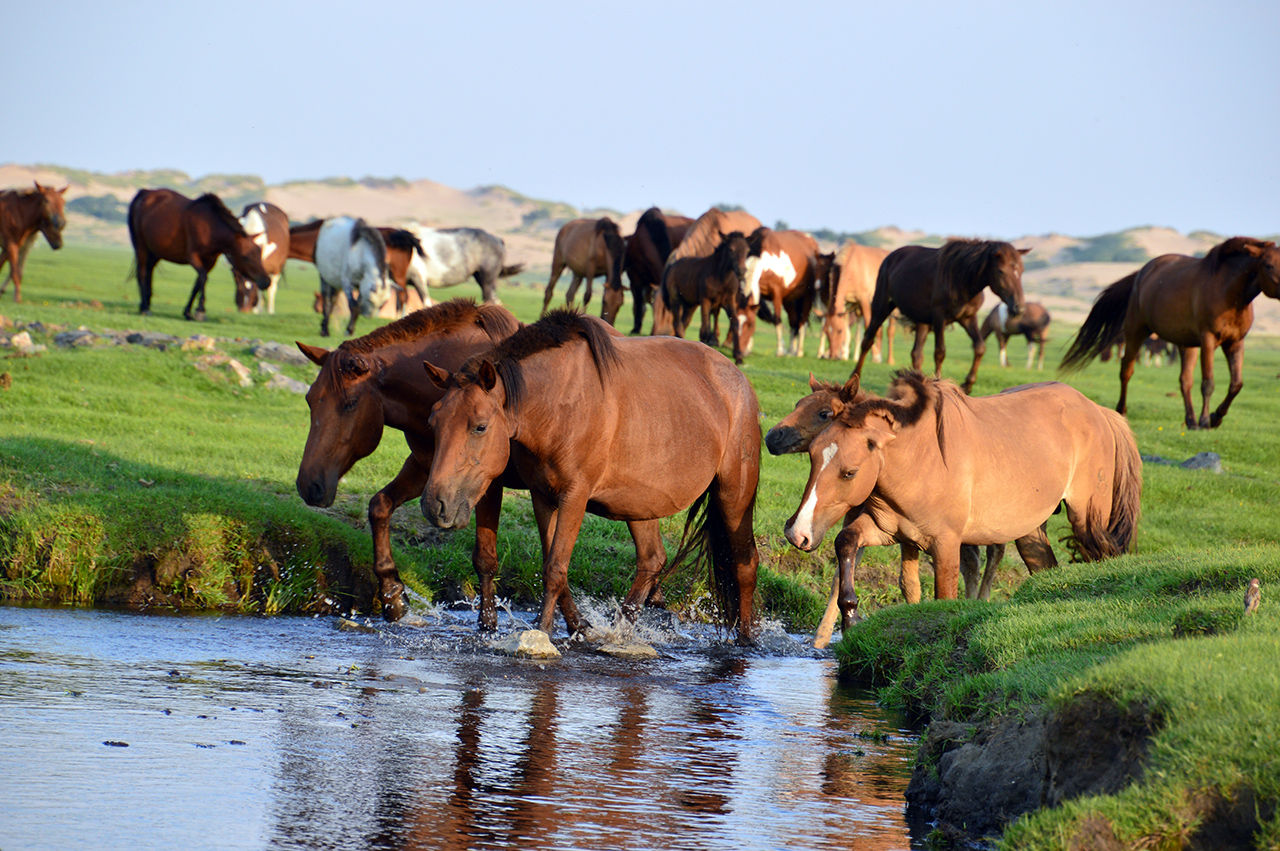The Mongolian horse stands as a testament to its unaltered lineage, deemed a semi-wild breed that traverses the untamed wilderness with minimal human intervention. Revered as the national spiritual animal, the Mongol horse becomes an invaluable companion, a diminutive yet formidable force capable of accomplishing the extraordinary—carrying riders and gear across mountains, rivers, and rugged terrain. Riding these creatures bestows an unparalleled sense of freedom, an experience unparalleled on Earth—an invitation to witness this firsthand awaits.
In stark contrast to Western practices, Mongolians adopt a decidedly "hands-off" approach to horse care. These resilient creatures are not subjected to baths or fed specialized diets; instead, they freely graze on the steppe, resiliently foraging through snow in winter. The intrinsic abundance of nature obviates the need for costly upkeep, positioning horses as practical necessities integral to daily life rather than opulent luxuries.
Mongolian nomads, historically renowned as adept horsemen, carry forward their equestrian prowess to the present day. Drawing from the legacy of Genghis Khan, Mongol horse archers exhibited extraordinary feats, sliding down their horses to shield themselves from enemy arrows, simultaneously returning fire at full gallop.
The education of a modern Mongolian horseman commences in childhood, with parents placing their offspring on horses before they can independently hold on. By the age of 4, children ride alongside their parents; by 6, they partake in races; and by 10, they master the craft of crafting their tack.
Mongolian cultural values underscore humane treatment towards horses, reflected in the distinctive design of Mongolian tack—crafted predominantly from rawhide and employing knots instead of metal connectors. Following a "one size fits all" approach, saddles, halters, and bits are produced in a singular size. This lightweight tack, diverging from its Western counterparts, emphasizes a commitment to the harmonious coexistence of humans and horses within the Mongolian cultural milieu.



 Naranchuluun
Naranchuluun 